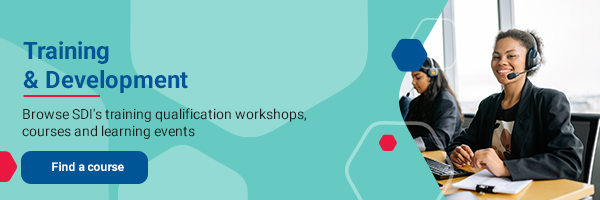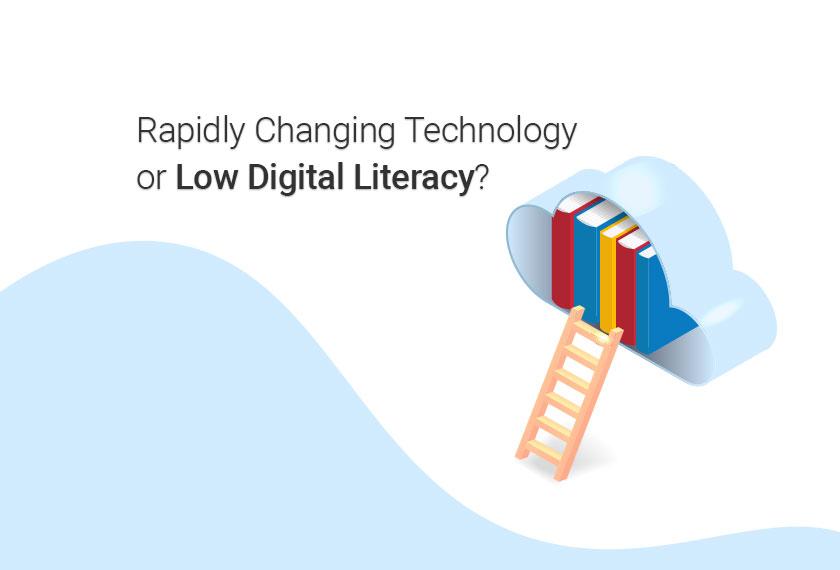
New technologies are emerging daily, and with each innovation, there is a need (and pressure) to acquire new digital skills quickly. But do you know how much knowledge you, as someone who provides service support, or your organisation’s end-users, should have today? And how much knowledge would you like your end-users to have?
Not easy questions to answer, right?
In this article, we’ll answer why building digital literacy is important for the service desk and how to maintain a balance between digital literacy and rapidly changing technology.
So, if you want to find out more, continue reading.
Digital Literacy: What, Why and How
Whether we want to admit it or not – today’s literacy goes way beyond the ability to read and write.
There are several other skills you have to master to achieve personal and business goals successfully. From the ability to find information, communicate, collaborate, and use technology; to critical thinking, and practical and functional skills —these are some of the essential skills needs, imposed on us by the rapidly changing technology landscape and the new world of work.
Digital literacy is simply becoming as important as reading and writing!
If we only look at the last 2 years, around 1.9 million fewer people in the UK are digitally excluded than before the pandemic.
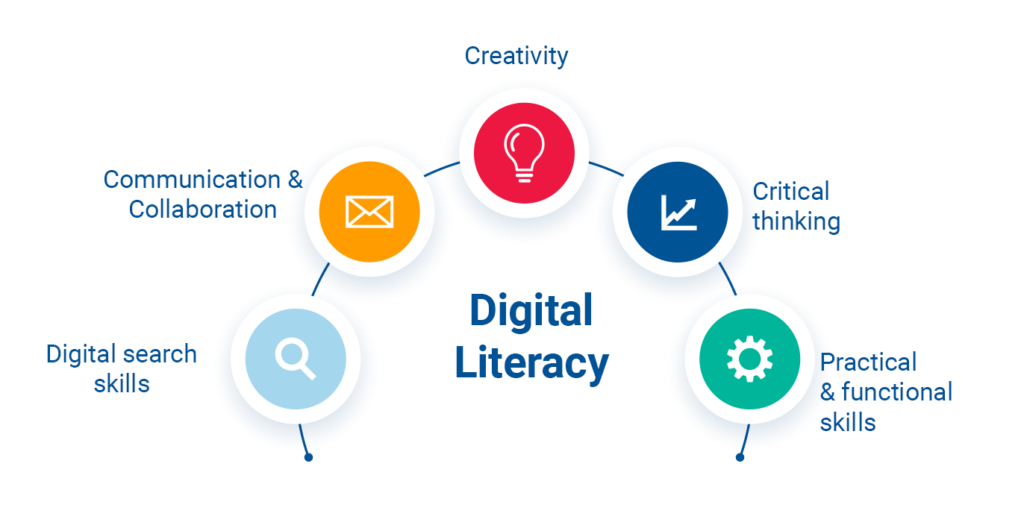
What Is Precisely Digital Literacy?
Digital literacy is defined as the ability to use different types of technology, from smartphones to computers; to find, access, understand and share information.
Digital literacy matters. Without digital literacy, most of us wouldn’t be able to create, deliver, consume, or support the products and services required to maintain a certain quality of life.
If we just look at the UK for example, according to The 2019 Consumer Digital Index, 11.9 million people (22% of the UK population) do not have the digital skills needed for everyday life in the UK. The same study also predicts that by 2030 around 4.5 million people (8% of the UK population) will remain digitally disengaged.
So, who are the employees most likely to need support? According to the data from the Essential Digital Skills Report 2021, these are employees aged 55-64, individuals working part-time, those in the service sector, and those with no formal qualifications.
Why Is Digital Literacy Important for The Service Desk?
Let’s look at service management. It is safe to assume that as a Service Desk Manager, you should have strong digital skills, right? After all, your professional life and career depend on your digital literacy.
However, isn’t it safe to say that it also depends on the digital literacy of the end-users you are working with daily? The answer is yes. But how do you keep up with technologies and tools? And how do you share that knowledge with end-users with low digital literacy?
The Importance of Building Digital Literacy
Low digital literacy levels are sometimes well camouflaged, making them hard to identify. In fact, many organisations are still struggling with identifying digital skills gaps.
For example, employees in some occupations may not need to use general digital tools such as e-mail or spreadsheets or management tools like Workzone, Asana or Trello for their work. However, because of the collaboration-intensive nature of knowledge work, employees in these occupations with limited digital skills can indirectly slow down their organisation from achieving optimum productivity or realising its full potential.
How To Develop Digital Literacy
To thrive in today’s rapidly changing environment, organisations must think more about business requirements and the skills needed to achieve future business outcomes.
On the other hand, for employees to thrive, they need access to accessible upskilling opportunities that will allow them to acquire new competencies and develop their digital skills when required.
This means that there should be a training and development program in place. A training program aligned to defined roles and skills matrices to equip staff with the skills and knowledge organisations require to succeed.
According to McKinsey, an organisation should develop a skills taxonomy to identify the most crucial skills for success.
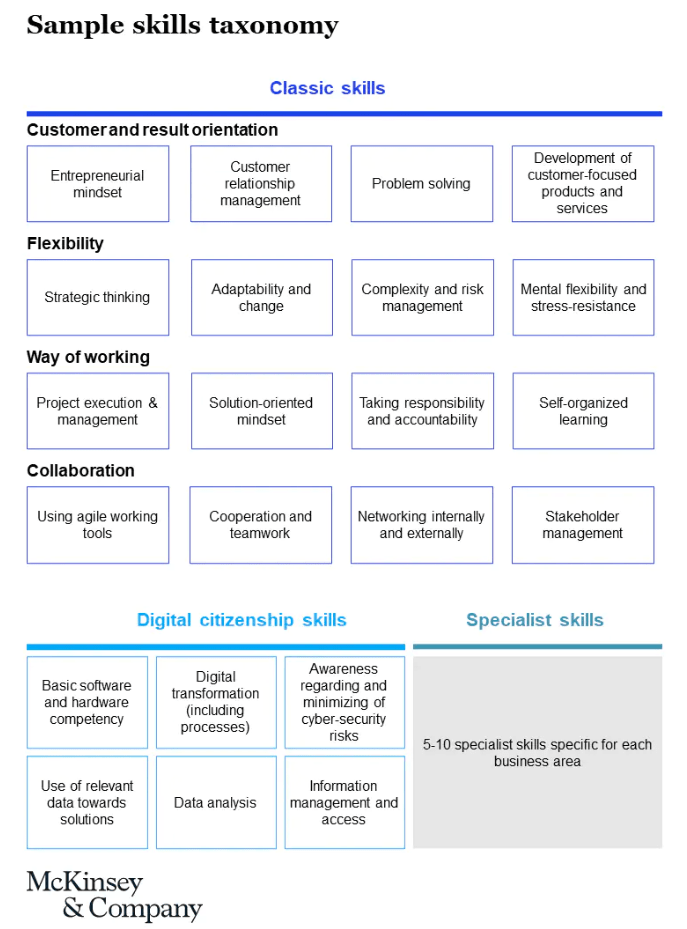
Source: McKinsey & Company
After pinpointing critical skills, it’s time for the skill gap analysis. Running a successful skill gap analysis will help you identify where the organisation stands today and if and where skill gaps exist within your team or organisation.
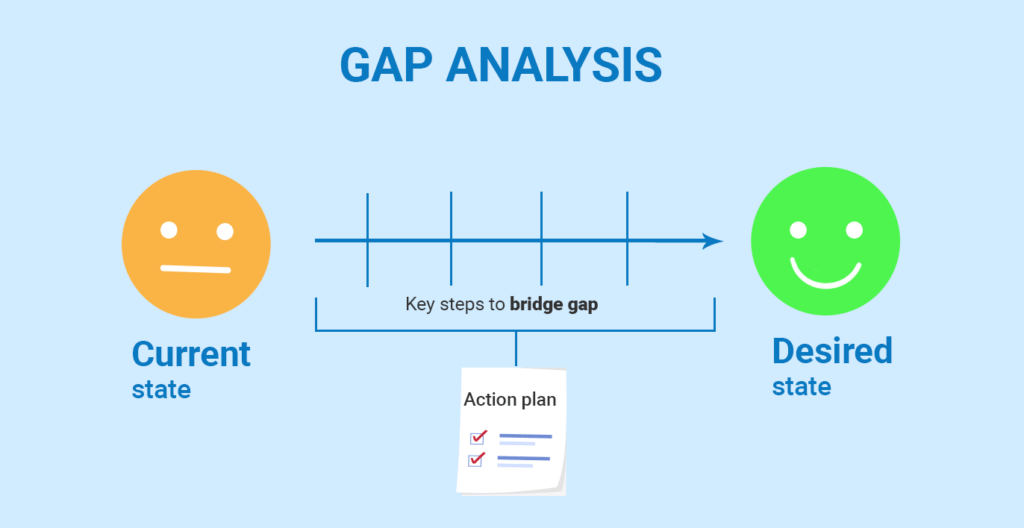
However, skill gap analysis does come with its challenges!
So, here are some steps that will help you bring closer to identifying and closing skill gaps in your workplace:
- Encourage employees to give feedback
- Encourage internal conversations about skills, not jobs
- Identify future skills needed in your company and industry
- Measure and evaluate employees’ existing skills
- Match identified future skills needs to existing skills
- Develop learning pathways
- Develop a comprehensive onboarding plan
Discover what skills service desk professionals will need tomorrow.
Engaging With End-Users With Low Digital Literacy
If we look at the service desk, it’s good practice to collect and analyse data about the number of times end users use knowledge through channels such as self-help or user-facing knowledge repositories. However, if end-users with low digital literacy are not confident using self-service to leverage knowledge, interaction with a support representative is needed.
So, here are some tips to help you engage with low digital literate end-users and improve their experience:
#1 Build confidence
Encourage your end users not to be afraid of trying new ways to do things or to use new technology. Show an end user how easy it can be to undertake tasks they may be afraid of. When people experiment with digital tools, they can build confidence in their abilities, become more digitally literate and share that confidence with other end users.
#2 Build an engaged self-help community
There are always people in any organisation happy to help others. There are many great examples of organisations that have created internal communities where people can share, discuss, and learn.
Think about simple rewards and recognition for the people who help others and encourage people to contribute to improving organisational digital literacy.
#3 Undertake a digital literacy assessment
Understanding if employees know how to use the tools at their disposal is super important, why invest in tools and digital devices if only a certain percentage of the workforce can use them effectively? Create a list of how tools and technology are used in your organisation and prioritise it.
Think about the basics, like finding and opening different applications on a device or updating a password when prompted, utilising the available controls on a device, or connecting a device to Wi-Fi. Then use that to identify digital competency and learning opportunities.
#4 Make learning easy and fun
Once you have determined the digital skill levels, you can put together a digital learning program that includes online classes and on-the-job training courses. That may already be in place in some organisations, however, there are other routes if that’s not in place.
Find online courses or YouTube ‘how-to’ videos. Share those with your end users and encourage them to take an online course or watch a video. There are many free-of-charge examples out there that end-users can consume in their own time and improve their digital literacy.
#5 Simplicity is the key
Always explain unfamiliar information in simple terms. One way to become good at this is through practice. Writing notes and simplified guidelines can help you define more complicated steps and make the learning experience less overwhelming.
Don’t just stop there! Share those notes or guidelines with your colleague and encourage them to improve their learning experience too.
#6 Encourage people to ask for help
Encourage end-users not to be afraid to ask for help. If someone doesn’t understand how to undertake a digital-orientated task, encourage them to ask a colleague that does.
It’s true that people generally enjoy showing what they know by helping others.
#7 Training
To deliver the best experience to your customers and end-users, training courses are the ultimate solution. Training courses or learning workshops could help you identify new best practice tips and skills that will help you improve overall results.
Get Started Today
One thing is for sure – digital literacy should be considered part of organisation’s strategy. So, it’s time to start thinking more about the competencies required to support future business requirements. Creating skills development programs and identifying opportunities to expand the knowledge base within your organisation – is a good place to start.
If you would like to learn more about the qualifications, training courses and learning workshops based on the most recent, industry-leading best practices, click here.
Training Course Enquiry
Written by:
Antonija Bozickovic
Content Creator at Service Desk Institute























